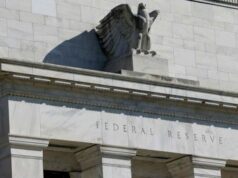
THE Philippine economy is set to shrink by 9.1% this year, weighed down by the fresh surge in coronavirus infections, a plunge in remittances and slow fiscal delivery, ANZ Banking Group’s research arm said on Monday.
ANZ Research’s latest outlook for the Philippines gross domestic product (GDP) is worse than its previous forecast of -2.5%, and lower than the government’s -5.5% projection.
“In terms of the trajectory, GDP growth is likely to contract by a slightly higher 9.2% y/y in H2 2020 compared with 9.0% in the first half,” ANZ Research Chief Economist Sanjay Mathur and economist Kanika Bhatnagar said in a note sent to reporters on Monday.
ANZ Research expects the economy to shrink by 11.5% and 7.1% in the third and fourth quarters, respectively, as the number of coronavirus infections continue to rise. This month, tighter restrictions were reimposed in Metro Manila and nearby provinces which have hurt consumer confidence.
“These restrictions have come at a time of tenuous recovery in household consumption since its trough in April. Real-time activity indicators capturing visits to retail and grocery stores stalled as soon as daily cases started rising in June,” ANZ Research said.
The Health department on Monday reported an additional 3,314 coronavirus cases, bringing the total to 164,474.
The pandemic also put a strain on economies where remittances of overseas Filipino workers (OFWs) are sourced. Over 21.65 million people have been infected by the coronavirus in more than 210 countries, a Reuters tally showed on Monday.
“While not totally unanticipated, we are seeing an unprecedented drop in remittances from OFWs. While the year-to-date fall of 6.4% in remittances appears benign, the monthly trend is clearly worsening,” ANZ Research said.
Cash remittances in May plummeted 19% year on year to $2.106 billion, the steepest decline in nearly two decades, latest data from the Bangko Sentral ng Pilipinas (BSP) showed. Year-to-date flows have also declined 6.4% to $11.554 billion. Cash remittances, which fuel consumption, could drop by 5% this year, the BSP said in June.
“The situation is unlikely to turn around any time soon as the industries employing most of the OFWs such as retail sales, recreation, and entertainment are still under strain from stringent social distancing rules and precautionary consumer behavior,” ANZ Research said.
More than 135,000 OFWs have been repatriated as of mid-August, according to the Foreign Affairs department.
SLOW FISCAL DELIVERY
At the same time, ANZ Research said the government’s “slow fiscal delivery” was another consideration in its weaker outlook for the Philippines. While state spending climbed 26.6% to P2.014 trillion in the first semester, it noted the figures hide the base effect of the weak spending last year due to the election season and the delayed 2019 budget passage.
“As such, the Philippine government has released less than half of its revised disbursements planned for the year. A front-loading of spending would have been more effective, in our view,” ANZ Research said.
The report also flagged the government’s slow infrastructure spending and frequent revisions to the list of priority projects.
Infrastructure spending decreased 4.3% year on year to P297.9 billion in the first half of the year amid disruption in construction activities during the lockdown, data from the Department of Budget and Management showed.
On the monetary side, ANZ Research said the central bank’s accommodative stance, which includes aggressive cutting of rates, have not led to lower market lending rates.
“Furthermore, credit growth has been weak in part due to commercial banks tightening credit standards and scaling back on credit lines,” it said.
The central bank has slashed rates by a total of 175 basis points (bps) this year, bringing down overnight reverse repurchase, lending, and deposit facilities at record lows of 2.25%, 2.75%, and 1.75%, respectively. It has also reduced the reserve requirement ratio (RRR) for big banks by 200 bps to 12% and by 100 bps for smaller lenders, reducing reserve requirements for thrift and rural banks to three percent and two percent respectively.
Despite this, lending growth in June continued to ease for the third consecutive month. Outstanding loans disbursed by universal and commercial banks inched up 9.6% in June, easing from the 11.3% pace in the prior month, BSP data showed.
ANZ Research said it expects the country’s economy to grow by 8.4% by 2021. — Luz Wendy T. Noble



